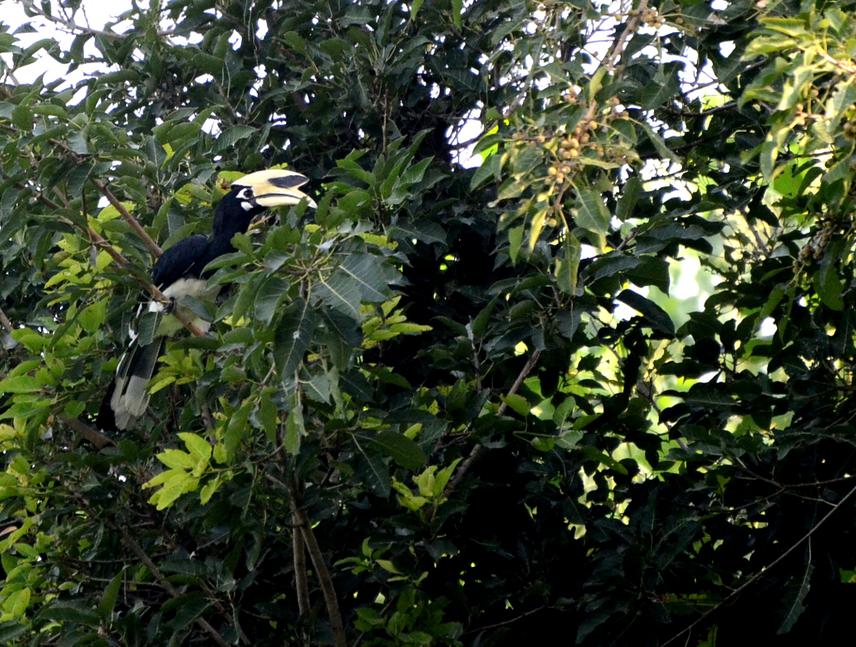Raman Kumar
Other projects
25 Jun 2018
Improving Public Awareness to Promote Conservation of Keystone Species and their Habitat in Human-Modified Landscapes: Hornbills in Western Himalayas
Using hornbills and fig trees as an example, this project aims to connect people with birds and highlight their role in maintaining ecosystems. The project will produce awareness material about hornbills and figs in the Western Himalayan region and motivate people to monitor and conserve them through citizen science.

Oriental Pied Hornbill observed feeding on fig fruit.
The Western Himalayas support high bird diversity but are undergoing rapid change. This project addresses conservation of birds in human-scapes of the Western Himalayas, using hornbills as an example.
Hornbills are charismatic birds that are important for conservation as they perform the critical function of dispersing plant seeds over long distances across landscapes. For perpetuating movement of hornbills within and across rapidly-changing modified landscapes (such as the foothill forests of the Western Himalayas) it is necessary to make these areas amenable for hornbills. Educating people about hornbills and encouraging them to retain landscape elements that provide resources for foraging, nesting and shelter for hornbills will aid in conserving the functional role of hornbills in modified landscapes.
With its long experience in conducting research and outreach in the Western Himalayan region, the project teak will organise a variety of public events (e.g. lectures and presentations, hornbill-watching sessions, and other activities) to educate people about hornbills, their ecological function, and their habitat requirements particularly their fruiting and nesting trees. Dissemination of information on hornbills will be done by producing quality interpretation products such as illustrated booklets for schoolchildren and a self-sufficient audio-visual presentation about hornbills depicting their ecological role and suggested ways to observe and conserve them.
As the next step, this project expects to motivate people to become 'citizen scientists' and collectively help map the occurrence of hornbills, study their behaviour, and assess their resources and habitat. Researching hornbills in human-scapes will provide ecological information on hornbills derived from local observations, and thereby address the concerns of managers, media and the general public about the life of hornbills in their neighbourhoods. All this will help propagate a stronger sense of stewardship among the public towards hornbill conservation. In the longer term, an increased involvement of the public will positively influence local/municipal policies in favour of protecting hornbills and their foraging and nesting trees in urban and rural areas of the Western Himalayan region.